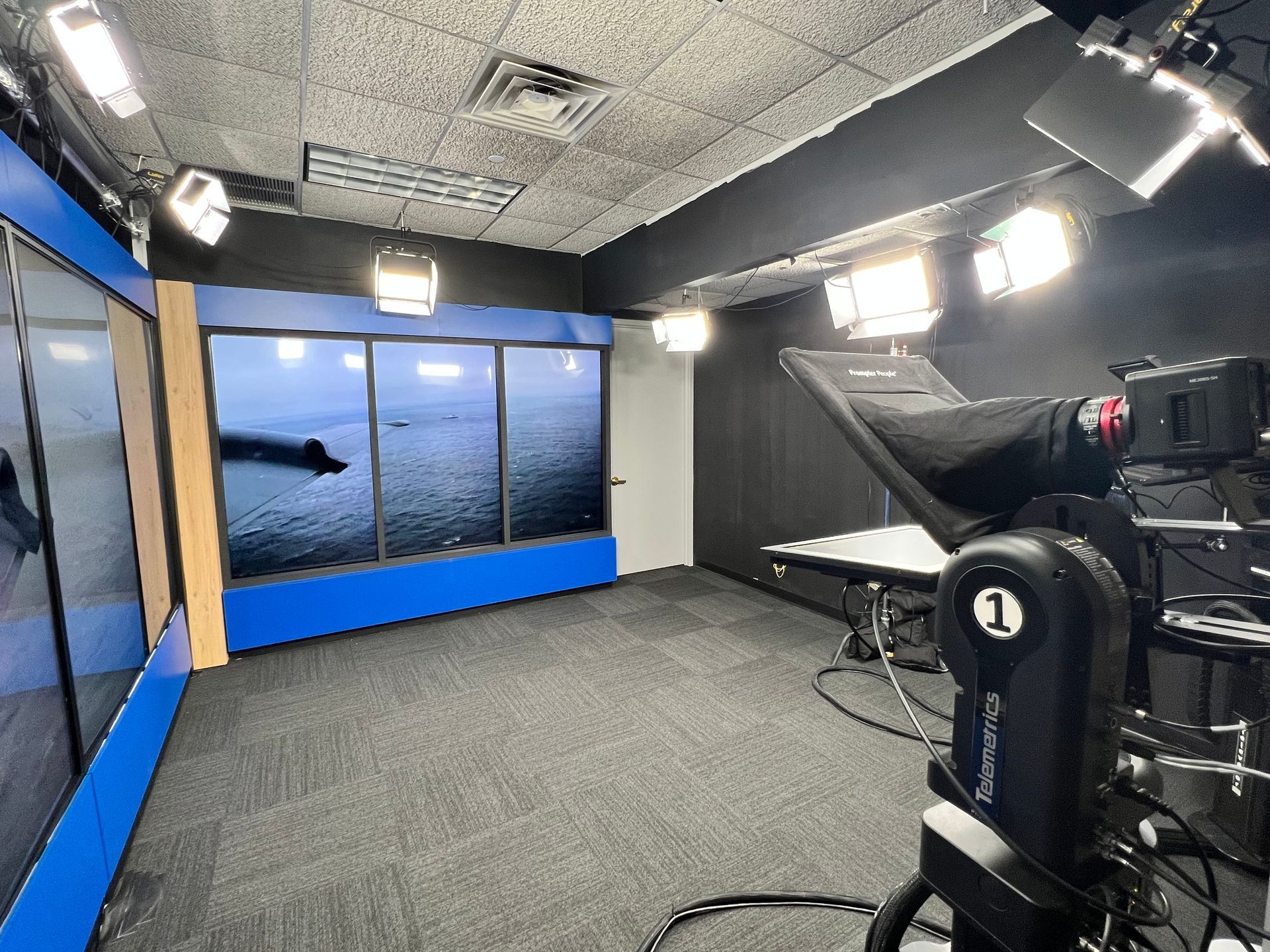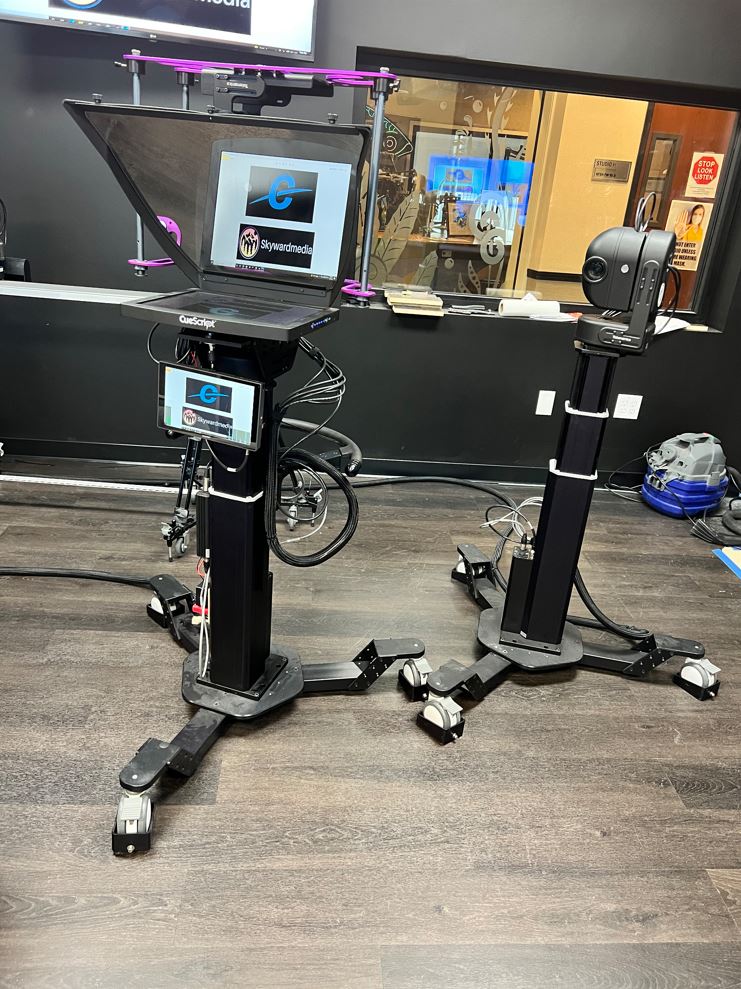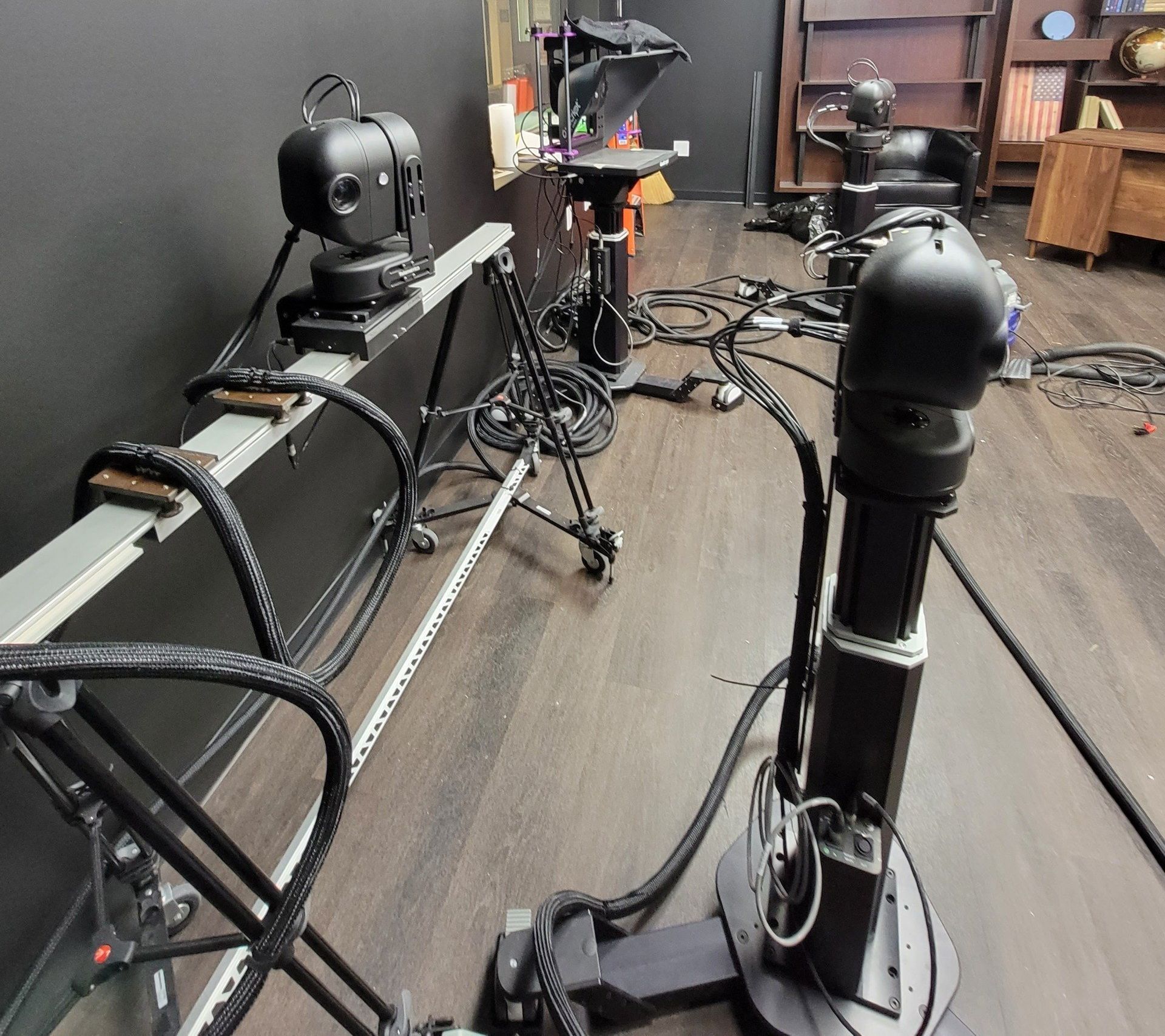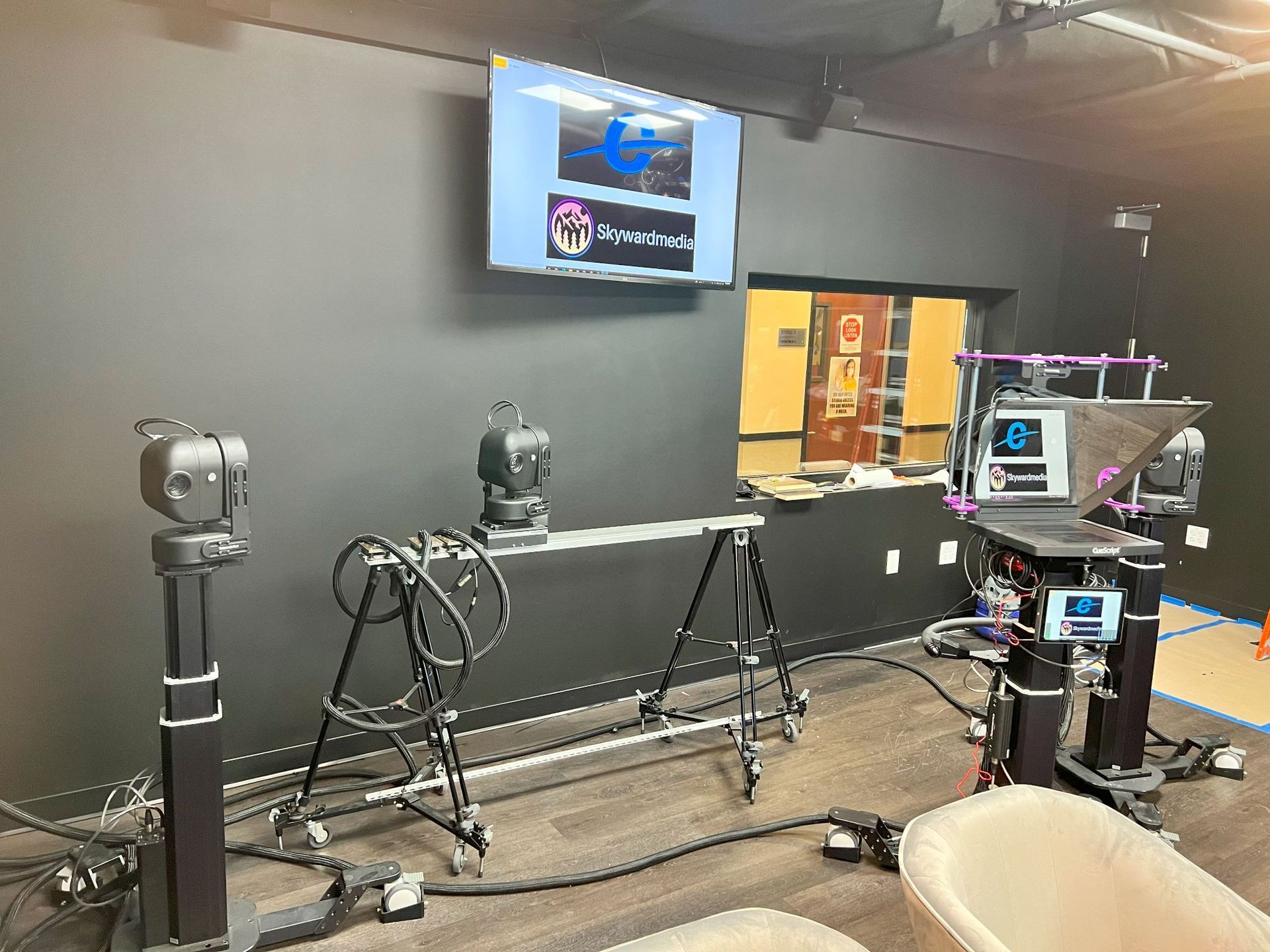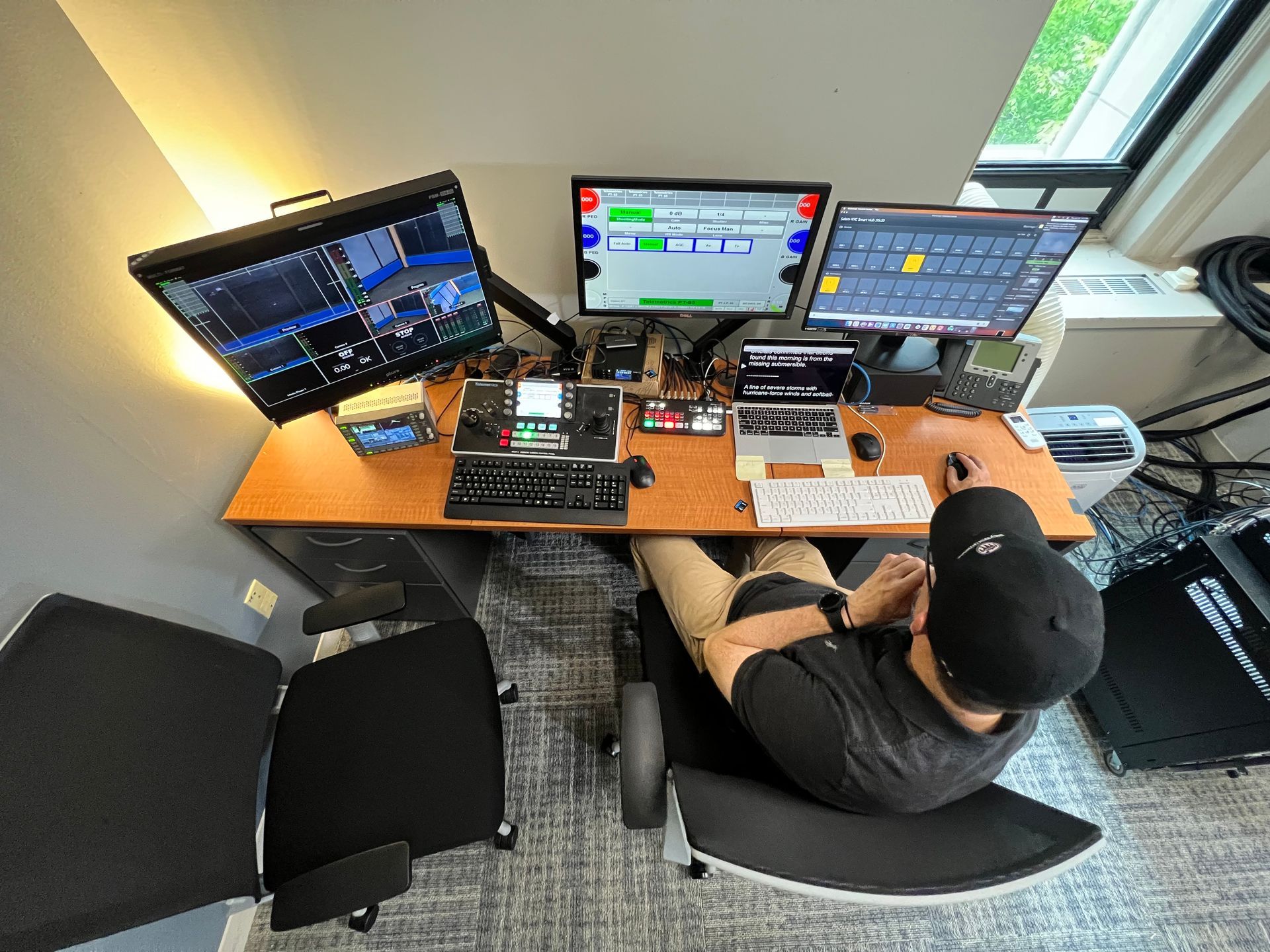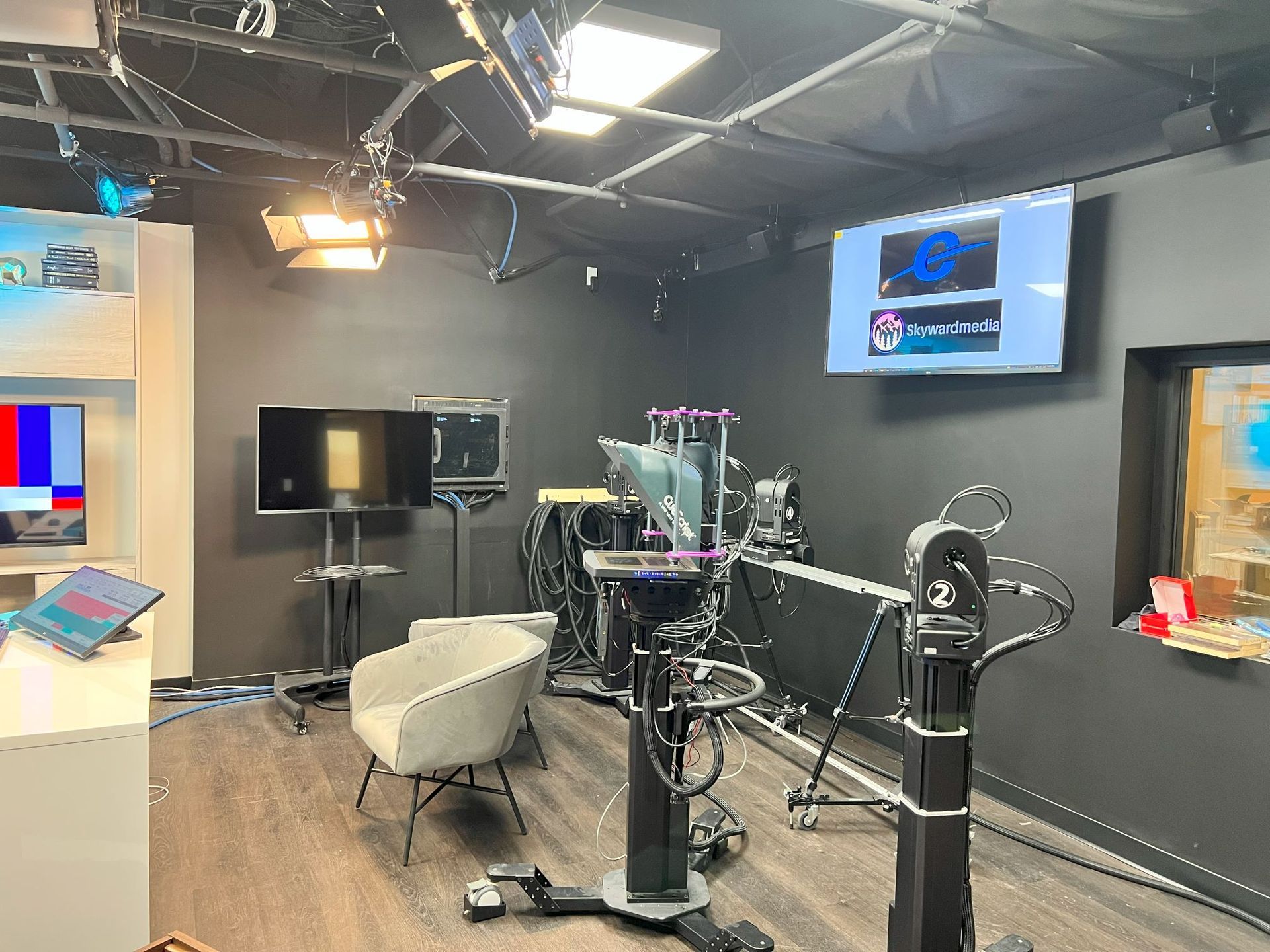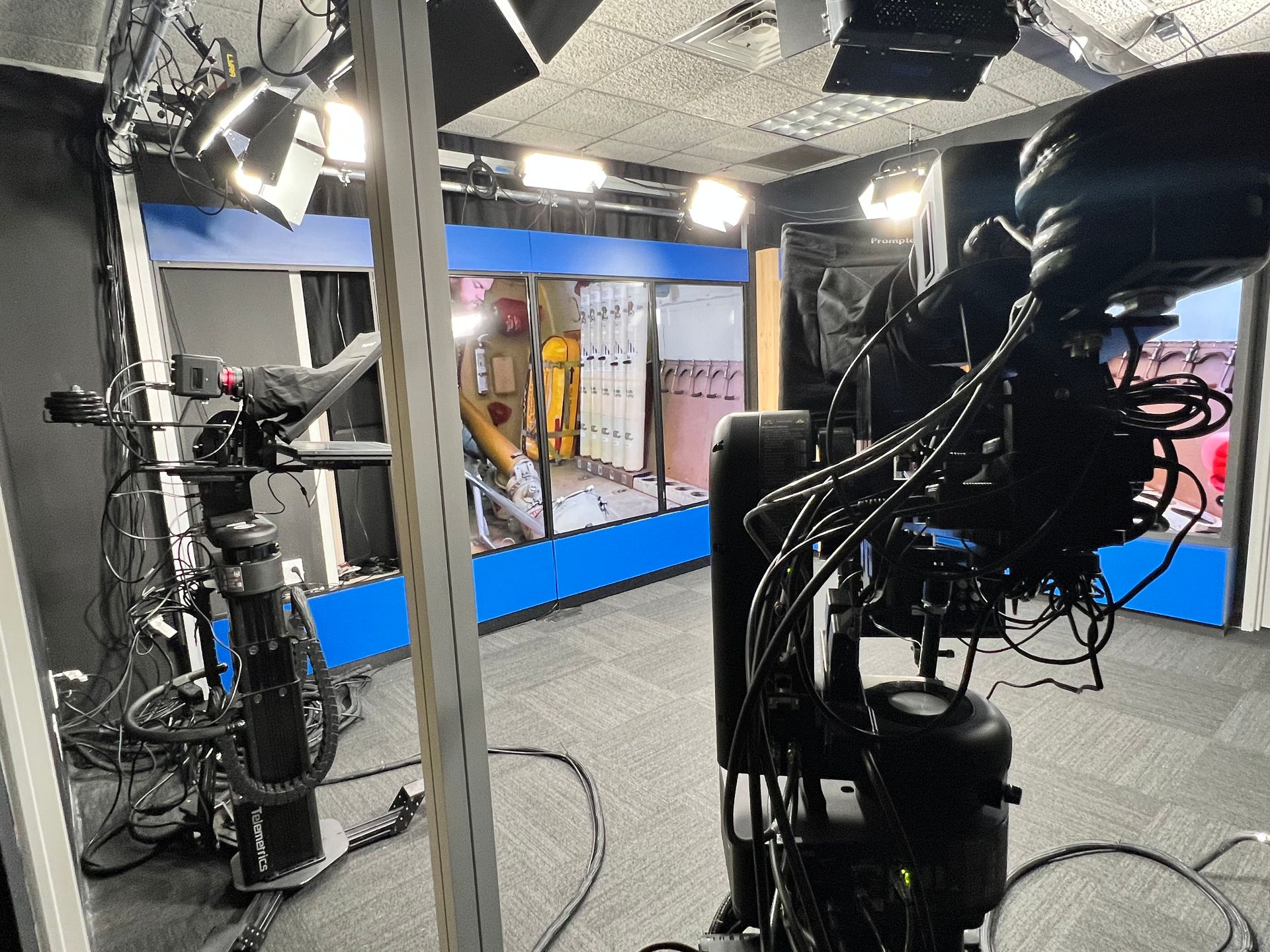Camera Systems
Camera Systems Design & Installation
Broadcast TV Cameras
Cinematography Cameras
Robotic
Cameras
PTZ
Cameras
Track & Slider
Cameras
Field Camera
Systems
Camera
Accessories
Camera Systems & Solutions
We offer an extensive range of camera systems for all media production.
Broadcast Television Cameras
Broadcast cameras are professional-grade cameras used primarily in the broadcasting industry to capture high-quality video footage for television, live events, and other broadcasting purposes. These cameras are designed to meet the stringent demands of broadcasting, ensuring exceptional image quality, versatility, and seamless integration with broadcasting equipment.
Key features of broadcast cameras include:
1. Video over IP with SMPTE 2110 Support with HDR: This feature allows for efficient data transmission and supports High Dynamic Range (HDR) content, ensuring superior image quality with a wider range of tones and colors.
2. Support for a Wide Range of Formats: Broadcast cameras are capable of handling various video formats, including HD-SDI, 3G-SDI, 12G-SDI, and 4K video, making them suitable for different broadcasting standards.
3. Motorized Lenses with Optical Zoom: Broadcast cameras are equipped with motorized lenses that offer remote control of focal length, allowing operators to adjust the zoom level effortlessly during live broadcasts.
4. Autofocus, White Balance & Gamma Adjustments: These features provide flexibility and ease of use, enabling operators to achieve precise focus, color balance, and dynamic range adjustments in real-time.
5. External Synchronization: Broadcast cameras support external synchronization, ensuring perfect timing and synchronization with other equipment in multi-camera setups.
6. SDI and HDMI Video Connections: These connectivity options offer versatility in terms of video output and allow seamless integration with broadcasting equipment.
7. Robotic Camera Control with Scene Selection: Some broadcast cameras can be controlled remotely using robotic systems, enabling smooth and precise camera movements during live broadcasts. Scene selection capabilities further enhance the camera's adaptability to different shooting scenarios.
8. Integration with Video Routers and Production Switchers: Broadcast cameras can be seamlessly integrated with video routers and production switchers, streamlining the broadcasting workflow and facilitating real-time video switching.
Broadcast cameras can be mounted on robotic pedestals for studio use, providing dynamic camera movements for live events, news broadcasts, and television productions. Additionally, they can be used in the field as Electronic News Gathering (ENG) cameras, offering mobility and flexibility for capturing live events, documentaries, and news reports on location.
Broadcast cameras are essential tools in the broadcasting industry, ensuring the delivery of high-quality, real-time video content for television and live events, while offering features that cater to the diverse needs of professional broadcasters.
Cinematography Cameras
Cinema cameras are high-end professional video cameras designed specifically for filmmaking and cinematic productions. They are known for their exceptional image quality, extensive dynamic range, and the ability to capture footage with a cinematic look and feel.
Cinema cameras typically offer a wide range of features and capabilities to meet the demanding requirements of filmmaking. Some of the key features include:
1. Video over IP with SMPTE 2110 Support with HDR: This enables seamless integration with modern broadcasting infrastructures, allowing for efficient data transmission and supporting High Dynamic Range (HDR) content, which enhances the camera's ability to capture a broader range of light and shadow.
2. 12G and 3G SDI Outputs with HDR support: These high-bandwidth video outputs ensure compatibility with professional video interfaces and allow for uncompressed video signals, further contributing to improved image quality.
3. Motorized Lenses with Optical Zoom: Cinema cameras often come with motorized lenses that allow for remote control of focal length, enabling precise framing and adjustments during shooting.
4. Autofocus, White Balance & Gamma Adjustments: These features provide flexibility and ease of use for filmmakers to optimize image quality quickly in various shooting conditions.
5. External Synchronization: External synchronization is crucial for multi-camera setups, ensuring that all cameras are in sync with each other, which is essential for seamless editing and post-production workflows.
6. SDI and HDMI Video Connections: Cinema cameras offer a range of output options, including both professional SDI and consumer HDMI connections, allowing for versatility in recording and monitoring.
Cinematography cameras can be mounted on robotic pedestals for studio use, providing smooth and precise camera movements during scripted scenes. Additionally, they can be used in the field as ENG (Electronic News Gathering) cameras, offering portability and flexibility for capturing live events, documentaries, and news reports.
Cinema cameras are powerful tools that cater to the needs of professional filmmakers, delivering exceptional image quality, creative control, and versatility for a wide range of cinematic productions.
Robotic Studio Camera Systems
Robotic studio camera systems offer remote-controlled movements and operations, providing unparalleled flexibility and precision in video production. These systems consist of robotic cameras placed in strategic locations within a studio or production environment, and they are controlled through an operator control panel.
The operator control panel is a sophisticated interface equipped with various features to manipulate the robotic cameras. It allows operators to initiate playback and record functions, facilitating easy capturing and reviewing of shots. The point-to-point movement capability enables the cameras to move smoothly and accurately between specified positions, ensuring precise framing and composition.
One of the significant advantages of robotic studio camera systems is the preset position recall feature. This means that operators can save and access predefined camera positions, angles, and settings, enabling swift and seamless transitions between shots during live productions.
These cameras are designed with advanced features for enhanced performance. They are typically free-roving and cableless, granting them the freedom to move anywhere in the studio without being limited by cables.
The autonomous motion feature allows the cameras to follow dynamic paths on their own, tracking subjects or predefined movement patterns with precision.
Moreover, robotic studio camera systems often incorporate redundant power and communications. Redundancy ensures that the cameras remain operational even in the event of power or communication failures, reducing the risk of technical glitches disrupting the production.
Additionally, these camera systems include LED lighting with full spectrum RGB colors. This lighting feature not only illuminates the subject but also allows for creative and customizable lighting setups, enhancing the overall visual quality and mood of the production.
PTZ Cameras
PTZ cameras, short for Pan-Tilt-Zoom cameras, are innovative and versatile devices commonly used in broadcasting, live events, conferences, and various video production applications. These cameras are designed to be remotely controlled through an operator control panel, which enables smooth and precise adjustments of the camera's pan, tilt, and zoom functions.
The operator control panel often features a touch screen interface, allowing operators to control the camera movements by simply touching and dragging on the screen. Additionally, PTZ cameras come with camera preset and memory preset recall capabilities. This means that operators can save multiple preset camera positions and settings, allowing for quick and seamless transitions between different camera angles during a live production.
The PTZ cameras in question offer an array of advanced features, making them a powerful tool for content creators. They support 4K resolution, providing ultra-high-definition video quality. With Video over IP support, specifically with SMPTE 2110 compliance, PTZ cameras can efficiently distribute video over standard network infrastructure. The motorized lenses with optical zoom allow for remote adjustments of the camera's zoom level, enabling close-up shots without compromising image quality.
Moreover, PTZ cameras are equipped with autofocus, white balance, and gamma adjustments, providing automatic optimization for sharpness, color accuracy, and contrast. They also offer 12G and 3G SDI outputs, along with SDI and HDMI video connections, ensuring seamless integration with various production setups and equipment. Furthermore, external synchronization allows precise timing and alignment of video signals, crucial for multi-camera setups and live production environments.
PTZ cameras are cutting-edge devices that provide unparalleled control and flexibility for capturing dynamic shots in various video production scenarios. Their operator control panel with touch screen control and preset recall, combined with features like 4K resolution, Video over IP support, and motorized lenses, makes them indispensable tools for creating compelling visual content.
Track & Slider Cameras
Robotic track and slider camera systems are advanced camera setups used in video production to achieve precise and dynamic camera movements along designated tracks or sliders. These systems offer high velocity and position accuracy, ensuring smooth and professional-looking shots for various applications.
The operator control panel is a central interface that enables users to control the camera system. It features playback and record functions, allowing operators to review and capture shots seamlessly. Point-to-point movement allows the camera to move precisely between specified positions, providing accurate framing and composition.
One of the key features is the preset position recall, which allows operators to save and quickly access predefined camera positions and settings. This feature streamlines the production process and ensures consistency in shot compositions.
Robotic track and slider camera systems come with various features to enhance their capabilities. They may include both curved and straight tracks, providing flexibility in creating different movement patterns and adding visual interest to the footage.
The built-in leveling feature ensures that the camera remains stable and balanced on uneven surfaces, delivering smooth and steady shots. The low footprint trolley system minimizes noise and vibration during movements, contributing to high-quality video capture.
The camera heads in these systems are equipped with full servo pan, tilt, and zoom capabilities, allowing for precise and remote control of the camera's orientation and focal length.
These camera systems are especially well-suited for various applications, including virtual sets, LED video walls, and augmented reality environments. They excel in constrained spaces and can be installed on the floor or ceiling, providing flexibility in their setup and use.
Robotic track and slider camera systems offer sophisticated camera movement capabilities through user-friendly operator control panels. With high velocity, position accuracy, and features like curved tracks, leveling, and servo camera heads, they cater to a range of professional video production needs.
Their versatility makes them ideal for virtual sets, LED video walls, augmented reality environments, and use in confined spaces with both floor and ceiling installation possibilities.
ENG Field Cameras
ENG (Electronic News Gathering) field camera systems are specialized camera setups designed for on-location video recording, particularly in news reporting, documentaries, and other live events. These systems are engineered to be highly portable and versatile, allowing broadcasters and journalists to capture high-quality footage in various environments and conditions.
One of the key features of ENG field camera systems is their support for High Dynamic Range (HDR) content, which enhances the camera's ability to capture a broader range of light and shadow, resulting in more realistic and vibrant images.
Video over IP with SMPTE 2110 support enables seamless integration with modern broadcasting infrastructures, facilitating efficient data transmission and streamlining production workflows.
The motorized lenses with optical zoom offer the flexibility to adjust focal lengths remotely, ensuring that operators can frame shots precisely even from a distance.
Autofocus, white balance, and gamma adjustments contribute to easy and quick optimization of image quality, allowing operators to adapt to changing shooting conditions swiftly.
The availability of 12G and 3G SDI outputs ensures compatibility with professional video interfaces, providing high-bandwidth data transfer for uncompressed video signals.
External synchronization enables synchronization with other production equipment, essential for multi-camera setups and maintaining a seamless production flow.
The inclusion of both SDI and HDMI video connections allows for versatile output options, ensuring compatibility with various recording and broadcasting devices.
ENG field camera systems often come in a comprehensive engineering camera kit, equipped with essential accessories and tools needed for successful outdoor shoots. This kit typically includes batteries, chargers, audio equipment, cables, and protective cases.
In operation, ENG field camera systems are used by journalists, videographers, and broadcasters to capture live events, interviews, and news reports with mobility and agility. The cameras' portable design allows operators to move quickly between different locations, ensuring they can cover breaking news or time-sensitive stories effectively.
Camera Accessories
Studio camera accessories are additional equipment and tools designed to enhance the functionality and performance of studio cameras. These accessories are essential for creating a professional and efficient studio setup and ensuring smooth broadcasting or video production workflows.
1. Teleprompter Systems: Teleprompters are devices that display scrolling text to help on-camera talent read scripts or prompts without looking away from the camera. The text is reflected onto a semi-transparent mirror, positioned in front of the camera lens, allowing the talent to maintain eye contact with the audience while reading the script.
2. Tally Systems: Tally systems provide visual indicators to the on-camera talent and crew, showing which camera is currently live or on-air. This helps everyone involved in the production to be aware of the camera's status and enables seamless coordination during live broadcasts.
3. Return Video Monitoring: Return video monitoring allows camera operators and talent to view the live program feed or preview output, ensuring they are aware of the visual content being broadcasted or recorded.
4. Tripods: Tripods provide stable support for studio cameras, ensuring steady and smooth shots during broadcasts or recordings. They come in various sizes and configurations to accommodate different camera setups.
5. Cable Management: With multiple cables involved in a studio camera setup, cable management accessories, such as cable trays, ties, and clips, help keep the cables organized and prevent tangling or accidental disconnections.
6. Engineering Field Kits, Cases, Cabling, Hardware: These accessories encompass all the necessary tools, spare parts, and equipment needed for on-site setup, maintenance, and troubleshooting of studio cameras and related systems. They ensure that the cameras are always in optimal working condition.
Studio camera accessories can be integrated with robotic pedestals, allowing operators to control and adjust the precise camera movements, enhancing the production process and providing dynamic shots during live events or broadcasts.
Let's build the future
We create customized camera system solutions and
provide managed services for each step of your camera project

